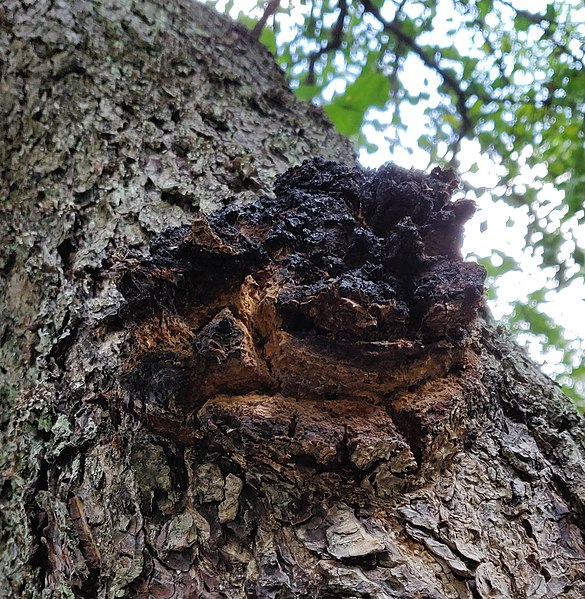This latest conversation in our ongoing series on functional mushroom extraction creates the trilogy. Our first article illustrated the reasons why one might want to extract mushrooms; the second considered using supercritical carbon dioxide (sCO2) extraction. This third story migrates into a domain that’s not customary in cannabis extraction yet (but stay tuned) — solubilizing phytochemicals in water. The differences between sCO2 and water parallel differences in solvent polarity.
As with other solvents like ethanol, where you can use warm, cold, or cryogenic, or CO2, where you can use sub- or supercritical parameters, there are options for using water as well. Researchers used subcritical (pressurized) water, or SCW (critical point at 374°C, 224 bar) to extract ground Chaga mushrooms. [1] As you know, hot water turns to steam, liquid to gas. Keeping the hot water under pressure, though, maintains its liquid form.
Benefits of SCW include its high density, solubilization of low molecular weight organic compounds, and the ability to break ester and ether bonds in polymer chains. [1] Interestingly, SCW can remediate pollutants from soils and sediments. [2] Closer to home for our conversations, SCW has been used to pull out key constituents in herbs like oregano or rosemary, such as terpenes and polyphenols. [3,4]
The Chaga mushroom extraction used temperatures between 50°C and 300°C, and extraction times of 10, 30, or 60 min. [1] The researchers’ main objective was to assess the antioxidant capabilities of the extracts generated from the various extraction conditions, as compared to the antioxidant Vitamin C (L-ascorbic acid). As the extraction temperature and time increased, so did the ability of free-radical scavenging molecules — with pretty names like 2,2´-azino-bis(3-ethylbenzthiazoline-6-sulfonic acid), or ABTS, and 1,1-diphenyl-2-picrylhydrazyl, or DPPH — to bind to free radicals, thereby demonstrating higher antioxidant activity. Total phenolic content increased with temperature and time as well; however, for both ABTS, DPPH, and phenolic content, there was a sweet spot where additional heat or time had a damaging effect. [1]
Another study compared using pressure and a pulsed electric field (PEF) versus water or ethanol extraction of white (button) mushrooms. [5] These researchers were looking for an alternative to water extraction since it requires higher temperatures (e.g., 50-80°C) and longer extraction times which can degrade desired compounds; ethanol extraction uses lower temperatures but still can have long extraction times and requires lots of increasingly expensive solvent.
The PEF, conversely, as the name relates, uses an electric field at defined time intervals to cause plant tissues to be more permeable. Lower extraction temperatures can be used (i.e., 20-50°C), thereby reducing energy costs. Interestingly, the PEF strategy can enable selective extraction of desired phytochemicals and isn’t damaging to thermally sensitive molecules.
Pressure plus PEF provided the most mushroom polysaccharides and rivaled water extraction on protein concentration. Water proved superior at extracting polyphenols. When the researchers followed their initial extraction strategy with an ethanol extraction, they demonstrated the utility of their pressure plus PEF technique. Pressure plus PEF versus just pressure, then ethanol, produced statistically similar levels of polyphenols and polysaccharides, highlighting the PEF method’s ability to cut out ethanol as a solvent altogether. [5]
References
- Seo, H-K. and Lee, S-C. “Antioxidant Activity of Subcritical Water Extracts from Chaga Mushroom (Inonotus obliquus).” Separation Science and Technology, vol. 45, 2010, pp. 198-203. [journal impact factor = 1.718; times cited = 20 (SemanticScholar)]
- Hawthorne, S. et al. “Extraction of Organic Pollutants from Environmental Solids with Sub- and Supercritical Water.” Anal. Chem., vol. 66, no. 18, 1994, pp. 2912. [journal impact factor = 6.785; times cited = 140 (SemanticScholar)]
- Rodríguez-Meizoso, I. et al. “Subcritical Water Extraction of Nutraceuticals with Antioxidant Activity from Oregano. Chemical and Functional Characterization.” J. Pharmaceut. Biomed. Anal., vol. 41, no. 5, 2006, pp. 1560. [journal impact factor = 3.209; times cited = 111 (SemanticScholar)]
- Basile, A. et al. “Extraction of Rosemary by Superheated Water.” J. Agric. Food Chem., vol. 46, no. 12, 1998, pp. 5205. [journal impact factor = 4.192; times cited = 67 (SemanticScholar)]
- Parniakov, O. et al. “Pulsed Electric Field Assisted Pressure Extraction and Solvent Extraction from Mushroom (Agaricus Bisporus).” Food Bioprocess Technol, vol. 7, 2014, pp. 174-183. [journal impact factor = 3.356; times cited = 49 (SemanticScholar)]
Image Credits: Olli Niemitalo / CC0











